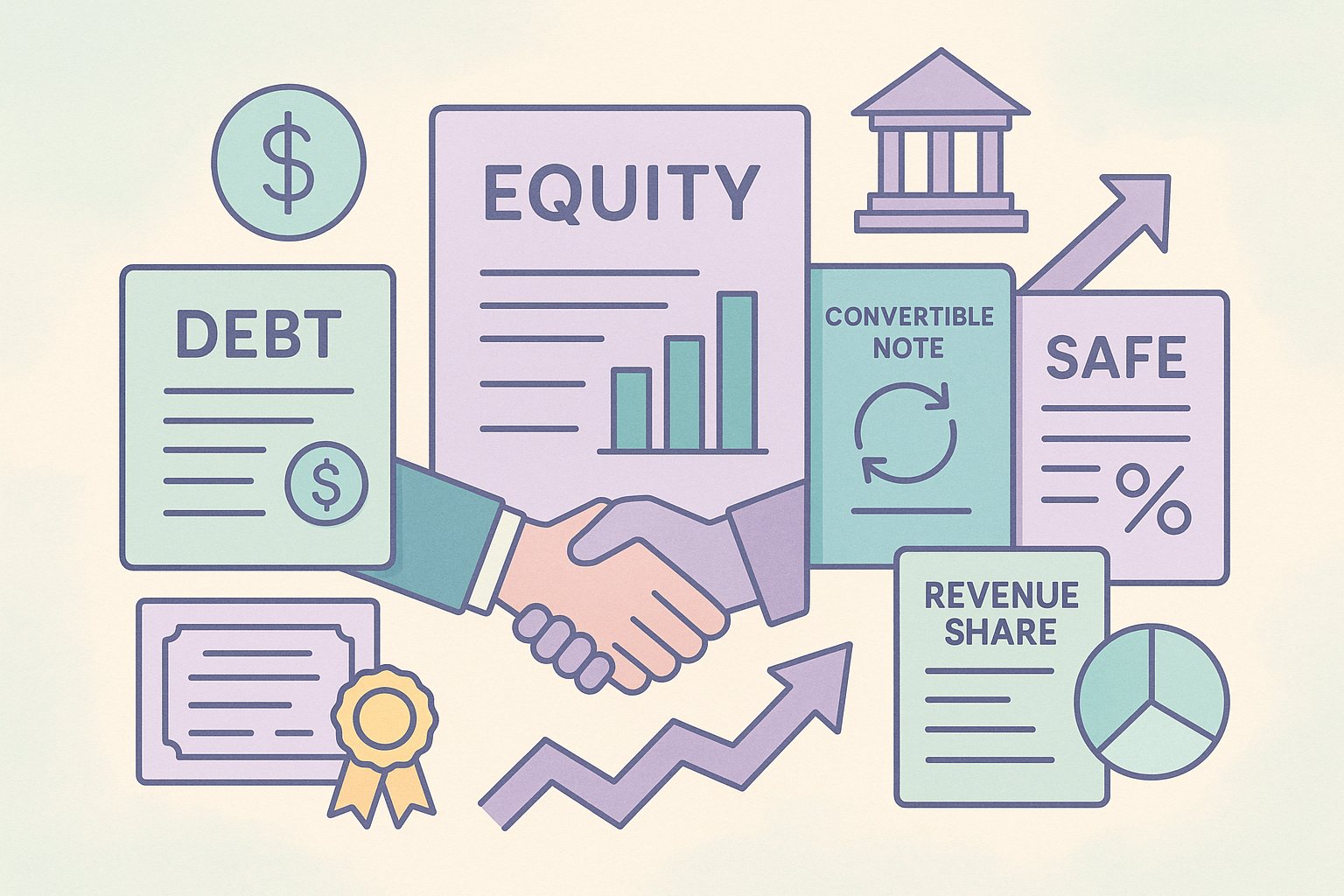Setting the Stage: From Surging Expectations to Startup Struggle
In the thrilling arena of equity crowdfunding, investor enthusiasm often surges ahead of startup realities. Backers picture rapid user growth, skyrocketing valuations, and headline-making exits, while founders grapple with product-market fit, hiring hurdles, and finite resources. This divergence between investor expectations and the day-to-day grind of launching a new venture can create tension, erode trust, and stall momentum. Yet, when both sides appreciate each other’s perspectives—embracing transparency, setting realistic milestones, and fostering continuous dialogue—the gap narrows. In this article, we’ll journey through the landscape of investor optimism and startup truth, explore the sources of misalignment, and reveal practical strategies to bridge the divide, ensuring your crowdfunding campaign resonates with clarity and credibility.
The Investment Dream: What Backers Envision
For many crowdfunding participants, equity stakes represent more than financial returns: they embody belief in a visionary idea. Investors often imagine sleek product launches, viral marketing success, and a smooth runway to profitability. They expect founders to communicate ambitious timelines, deliver prototypes promptly, and nail every benchmark en route to hockey-stick growth. In an era where social media amplifies success stories overnight, backers may unconsciously benchmark every new campaign against the unicorn tales that flood headlines. This optimism fuels robust funding rounds but also sets lofty performance bars.
From the investor’s vantage point, equity crowdfunding offers direct access to innovation previously reserved for venture capital insiders. They crave detailed roadmaps, articulate progress updates, and concrete indicators of traction such as customer sign-ups, revenue figures, or strategic partnerships. When those signals arrive punctually, investor trust blossoms and word-of-mouth buzz amplifies campaign reach. However, when updates lag or milestones slip, frustration mounts, sowing doubts that can hamper follow-on support and jeopardize future fundraising rounds.
Trailblazing Truths: The Day-to-Day of Startup Life
Behind the scenes, startup founders navigate a labyrinth of product iterations, team building, and market pivots. Early prototypes rarely emerge fully formed; engineers debug code, designers refine user interfaces, and feedback loops drive constant evolution. Simultaneously, founders must balance limited capital against operational obligations—salaries, office costs, marketing expenses—and cultivate relationships with vendors, advisors, and potential customers.
In practice, timelines extend as unforeseen challenges surface. A manufacturing hiccup can push production schedules by weeks. Regulatory compliance demands consume precious bandwidth. Talent acquisition stalls when key hires opt for established firms. Simultaneously, founders combat imposter syndrome, strive to maintain morale, and steward their own financial sustenance. These day-to-day realities seldom align with the polished slides and optimistic forecasts presented during a fundraising campaign, creating a tension that demands candid discourse.
Communication Chasms: Aligning Aspirations and Operations
One of the most common catalysts for misalignment is communication breakdown. Founders eager to impress may overpromise on release dates, beta launches, or partnership announcements. Simultaneously, investors hungry for rapid validation may misinterpret preliminary data or disregard the iterative nature of early-stage development. Without clear channels for honest dialogue, both parties can harbor unrealistic assumptions.
Bridging this chasm begins with setting transparent expectations from the outset. Campaign materials should outline not only aspirational timelines but also known risks and contingency plans. Regular updates—whether monthly newsletters, video town halls, or interactive dashboards—provide tangible touchpoints that contextualize progress and setbacks alike. When founders share candid insights into challenges encountered and course corrections underway, investors gain a deeper understanding of the startup journey, fostering patience and long-term commitment.
Financial Realities: Burn Rates and Budget Constraints
In the crowdfunding spotlight, financial projections often sparkle with potential: multi-million dollar revenue forecasts, expanding team headcounts, and aggressive marketing spends. Yet, the reality of managing a lean budget poses a stark contrast. Early-stage startups typically operate on tight cash reserves, meticulously allocating funds to highest-priority initiatives such as product development, customer acquisition, or essential infrastructure.
Investors may not fully appreciate the delicate balancing act required to stretch every dollar. Payroll obligations, legal fees, cloud hosting costs, and travel expenses all chip away at the runway. Unexpected costs—such as expedited shipping for critical components or emergency repairs—can accelerate cash burn unexpectedly. Educating backers on budget stewardship, including monthly burn rates and a clear breakdown of expense categories, demystifies the process. When investors grasp that strategic resource allocation underpins sustainable growth, they are more inclined to support reasonable budget realignments and second-close funding extensions.
Milestone Discord: Timing Growth vs Deliverables
Milestones serve as the connective tissue between investor expectations and startup execution. Clear, measurable goals—such as completing a functional prototype, securing pilot customers, or launching a public beta—provide confidence-building waypoints. Yet, the pace of achieving these milestones can diverge significantly from the ambitious schedules often presented in campaign decks.
Startups that face repeated delays on key deliverables risk eroding investor enthusiasm, even when those delays stem from legitimate roadblocks. Rather than adhering strictly to a rigid timeline, founders can adopt adaptive milestone frameworks. By framing targets within ranges (“Beta release in Q3–Q4” instead of “September launch”) and highlighting interdependencies (“Prototype release contingent on component sourcing”), startups set more realistic benchmarks. When paired with frequent progress snapshots, this adaptive approach signals reliability and fosters investor goodwill even amidst shifting priorities.
Team Dynamics: Balancing Passion with Professionalism
Behind every startup lie the individuals driving its vision. Investors often seek reassurance in the strength of the founding team, scrolling through biographies that highlight technical prowess, industry experience, and entrepreneurial tenacity. Yet, the day-to-day reality of early-stage operations requires more than individual brilliance; it demands cohesive collaboration, effective conflict resolution, and the agility to pivot when necessary.
When communication styles clash or role responsibilities blur, productivity suffers and project timelines stall. For investors, the allure of a charismatic founder may eclipse concerns about team cohesion. To bridge this gap, startups can incorporate team health metrics into investor communications. Anecdotes about cross-functional hackathons, summaries of weekly scrum meetings, or highlights of recent hires provide tangible evidence of operational robustness. Demonstrating both vision and execution capacity instills confidence, reassuring backers that the venture can weather internal challenges as well as external market pressures.
Risk Rundown: Navigating Uncertainties Together
Every entrepreneurial journey carries inherent risks—technological hurdles, market acceptance, regulatory changes, and competitive threats. Investors in equity crowdfunding understand that risk tolerance varies widely: some chase high-risk, high-reward opportunities, while others favor ventures with built-in safeguards. To manage expectations effectively, startups must articulate risk profiles candidly, rather than glossing over potential pitfalls.
A comprehensive risk rundown addresses key domains: what happens if a critical supplier fails to deliver, how shifting customer preferences could impact adoption rates, and the implications of evolving compliance requirements. By presenting both the upside scenarios and the mitigation strategies in place, founders empower investors to make informed decisions. This transparency transforms risk from a nebulous fear into a calculated factor that both parties can monitor and manage throughout the campaign and beyond.
Building Trust: The Art of Transparent Reporting
Trust is the currency that converts investor enthusiasm into sustained support. In equity crowdfunding, where backers often lack direct access to company leadership, transparent reporting becomes paramount. Founders can leverage a variety of reporting tools—investor portals, live product demos, financial dashboards, and Q&A sessions—to maintain an open line of sight into operations.
Crucially, reports should balance quantitative metrics with qualitative narratives. While user acquisition figures and revenue growth rates offer objective measures of progress, stories about customer testimonials, team milestones, and unexpected learning moments add texture and context. When investors witness both the wins and the stumbles, they develop a holistic understanding of the venture’s trajectory, which deepens their emotional and financial commitment.
Crafting the Bridge: Strategies for Harmonizing Goals
Bridging the gap between investor expectations and startup reality requires deliberate strategies that align motivations, clarify metrics, and reinforce mutual accountability. One effective tactic is co-creating success metrics at the campaign’s outset. Inviting a select group of lead backers to participate in milestone planning not only secures early trust but also sets realistic goals that reflect both investor aspirations and operational feasibility.
Another approach involves tiered update schedules, combining high-level quarterly overviews with in-depth monthly reports for engaged stakeholders. This dual cadence accommodates those seeking a big-picture view without inundating others with excessive detail. Additionally, integrating investor feedback loops—such as polls on feature prioritization or virtual roundtables—fosters a sense of shared ownership and co-creation.
Finally, establishing clear escalation pathways for roadblocks ensures that critical issues receive timely attention. By designating point people for urgent investor inquiries and providing advance notice when major pivots become necessary, startups demonstrate respect for investor time and reinforce their commitment to accountability.
Looking Ahead: The Future of Investor-Startup Collaboration
As equity crowdfunding matures, the interplay between investor expectations and startup realities will continue to evolve. Emerging tools—like AI-driven performance analytics, blockchain-based share registries, and interactive virtual pitch environments—promise to deepen engagement and streamline transparency. Moreover, regulatory developments may introduce new share classes and incentive structures that further refine how risks and rewards are shared.
For founders and backers alike, the key lies in embracing partnership over transaction. By acknowledging the emotional and financial stakes on both sides, and by investing in clear communication channels, both parties can transcend traditional boundaries. When investors see founders not as distant entrepreneurs but as dedicated collaborators, and when founders regard backers not merely as capital sources but as strategic allies, the crowdfunding ecosystem thrives.
Seizing Momentum: Your Path to Cohesive Crowdfunding Success
Investor expectations and startup reality need not remain polarized. With intentional alignment—from transparent campaign materials and adaptive milestones to immersive reporting and collaborative goal setting—crowdfunding ventures can transform potential clashes into synergistic partnerships. Whether you’re a visionary founder or an inspired backer, cultivating mutual understanding paves the way for campaigns that not only meet their funding targets but also galvanize a community of advocates poised for long-term success. Embrace the bridge-building process today, and watch your equity crowdfunding journey unfold with clarity, confidence, and collective achievement.




